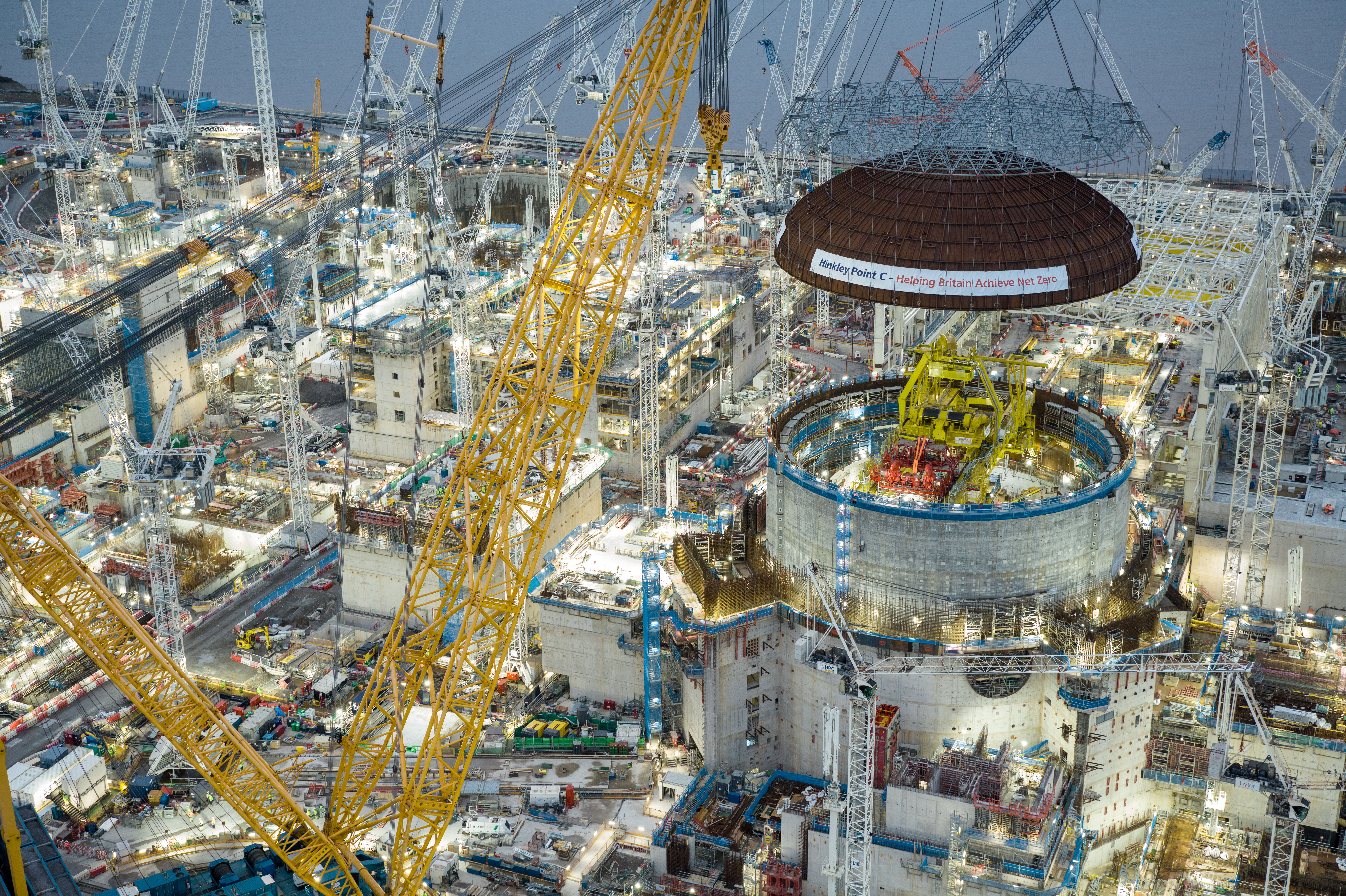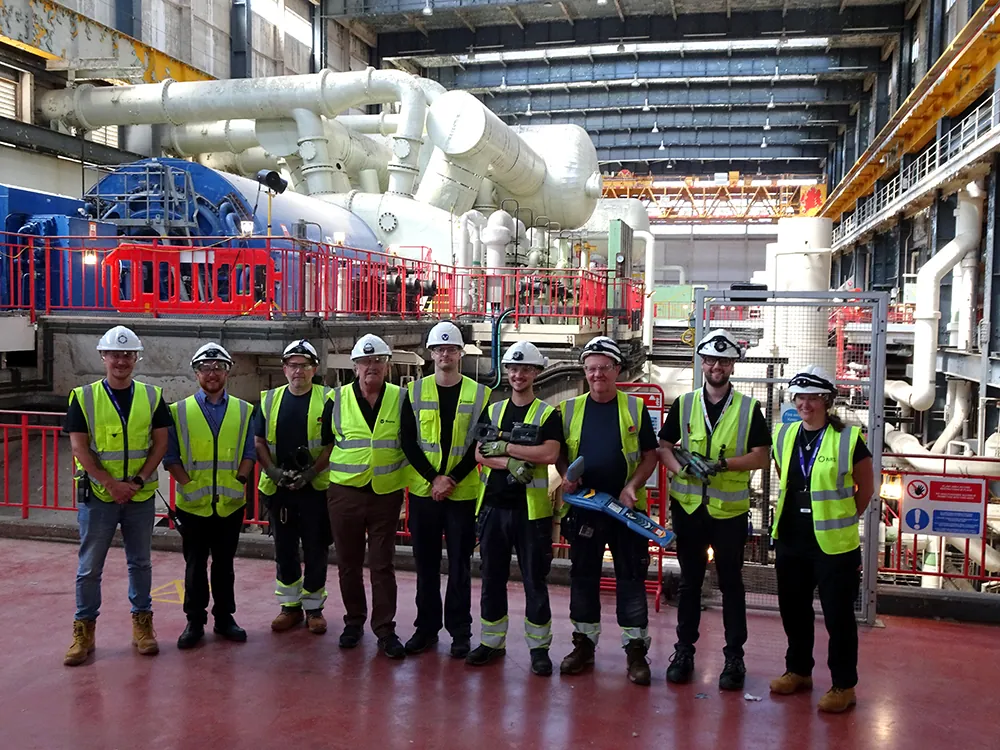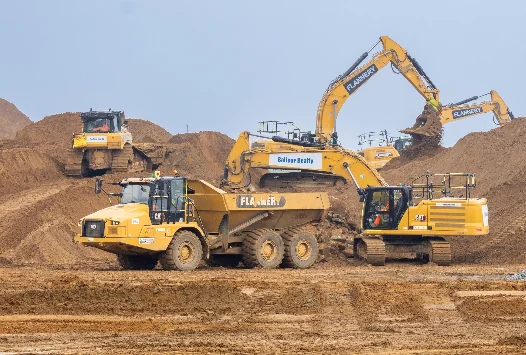Castletown Law has been investigating why investment into advanced nuclear technology faces obstacles due to regulations, economic interests, and fear of disrupting existing energy assets.
Why is Investment into Advanced Nuclear Technology proving so hard?
I pose this question from the position of someone who has been involved in the energy sector, initially as an engineer and then as a lawyer for many years.
In recent publications I have said that human engineering has the capability to produce abundant low-cost low carbon energy on a global basis using advanced nuclear technology (ANT) and no-one seriously disputes that position. The expectation that Great British Nuclear will back Rolls Royce and GE Hitachi as the next two technologies to be rolled out in the UK will come as no surprise to the nuclear industry. The government has invested so much into Rolls Royce SMR that it cannot do anything other than back it and as GE Hitachi already control the only currently available site in the UK to refuse to allow GE Hitachi to progress in the UK would fly in the face of the recent diplomatic trade discussions between the UK and the USA. Both of these involve known technologies, and it seems to make sense to go with known technologies in nuclear energy.
What is this doing for ANT?
The UK regulatory structure and capacity is designed to deal with the technology base used in the Rolls Royce SMR and the GE Hitachi BWR300. It has a lack of capacity to deal with additional processes and new technologies at a practical and structural level. This has been recognised for several years but nothing so far has been done about it. This is not a regulators problem as the regulator acts at the direction of the Secretary of State and in the absence of a change in the directive to regulators they have little option but to act within the confines of their remit, although they can ask for direction.
The energy crisis which has been in progress since the mid-2010’s has raised the price of energy and the industrial conglomerates, the “seven sisters” and the big energy companies are comfortable that their shareholders will not take action while the returns are at current levels. The investment by governments and private sector funders and institutions – into the historic energy production base globally is probably beyond a sensible calculation. The return on those investments and the justification for them carry a high measure of credibility in political capital and investment decisions.
My simplistic view of the situation is this. All of us in most countries in the world have invested money or paid for energy to a greater or lesser extent over the past few years so we all have an interest in finding the best solution.
For the political decision makers and investment fund managers the requirement to maintain the income from the projects already invested in is paramount. Although they all accept and agree that energy from ANT will be cleaner, cheaper and available for longer project life than any other current form of energy, the prospect of a new form of energy production which is capable of producing energy at less than half the current cost to consumers is not a good scenario for them.
Imagine a situation where you have invested billions in a product and put it on the shelves for sale, only to find that two weeks later a better product is available at half the price. The economic and financial impact for those involved is disastrous. This is not a new problem. The oil and gas industry knew that nuclear (but admittedly not ANT) was the single biggest threat to energy production from fossil fuels and took steps to protect itself through fair means and foul from the 1960’s onwards. To some extent this problem has been brewing for decades and whilst there have been entrepreneurs who looked at some new technologies, the fossil fuel industry and the investment sector never saw any of them as a real threat to the future of the fossil fuel industry and the invested capital in the way that nuclear and ANT in particular is now presenting.
While the impasse exists, it is unlikely that the fossil fuel industry’s control of vast investment funds will allow creation of a replacement energy source at less than half the cost of their product.
My suggestion is that because of the flexibility and variable outputs from ANT instead of allowing this situation to perpetuate, a planned approach to energy generation in each country should be applied.
Coal plant furnaces can be replaced relatively easily with ANT with the balance of plant remaining intact and subject to minor upgrades. If the fossil fuel industry with its massive resources was to get behind and initiative like this for a few years, then the decarbonisation programme would move forward at pace. It would allow many of the existing gas plants to have full life performance and perhaps have are-planting exercise similar to the proposed coal initiative above.
What then happens to those plants where the cost of electricity exceeds the new market level from ANT production either from replanted coal power stations or independent production from ANT. It may need a professor of economics to work this out but if the government already has a strike price and CfD position on big nuclear it means the government has to find a way to meet the CfD obligation. As explained below, not doing it is a worse outcome for everyone.
For other forms of energy generation from fossil fuels a planned termination will be needed but for an industry where trillions of dollars are invested in exploration, development and production this should not pose a major problem and surely the politicians who have been aligned with the fossil fuel industry all their lives will help the industry find a way achieve what is needed. Diverting investible funds for the benefit of industry and decarbonisation is after all in everyone’s interest.
From my point of view the blockage of funds into ANT isn’t so much an unwillingness to fund ANT but rather an unwillingness to decide to put at risk the investment structure built up over decades in the existing energy assets. I don’t know if this is lack of creative thinking on the part of investors or a control lever being pulled elsewhere.
The key is collaboration among technology owners and all parts of the energy sector and investment sector to find a solution and to bring down the silo walls that so conveniently prevent most people from seeing what is really going on. This theme was also picked up in the National Audit Office Report on energy strategy where it identified that DESNZ has no critical path or strategic consideration of bringing the different aspects of decarbonisation together. It identified that the absence of a coherent strategic approach would almost inevitably lead to taxpayers shouldering a heavier burden than necessary unless a well-structured approach is adopted. It is questionable whether the UK in particular can afford to wait until 2035 to see the “longer term” delivery plan for decarbonisation.
The alternative in particular for the UK is for it to lose its position as a leading nuclear – industrial and commercial nation. This will happen if as we are seeing other countries are able to offer industry, commerce and population base a green, affordable, secure supply of low-cost energy. The UK doesn’t really have a choice despite what those prevaricating and politicising may say. Other countries are already out stripping UK growth and developing and leading the way on adoption of new green low-cost nuclear technologies.
Why are they doing this?
They see the need to supply industry and societies with low-cost dependable energy as the catalyst for long term sustainable growth of national economy by attracting international inward investment to support the ability to develop and deliver the net zero promise and more.
The change in use of technology to de-carbonised industry and transport will require skilled workforces and available skill sets across a number of demarcations.
In contrast to the fossil fuel industry and the investment industry other parts of industry want to embrace advanced nuclear technology because they can see the benefits it will bring and the reduction in environmental damage it will support. Industry will benefit because products will be genuinely able to say they are “green” products rather than the massive amount of “green washing” which currently goes on.
The dilemma which is currently being faced on investment is exacerbated if action is not taken now. If as is suggested the use of advanced nuclear technologies to give energy security and long-term low cost of energy succeeds then it will be the catalyst for significant industrial and economic growth through national and international investment, which will make the dilemma of managing the cliff edge in price changes to low-cost energy much more manageable.
And if the predictions of the scientific community about fusion energy are correct, we will begin to plan for the advent of commercial deployment of fusion reactors in the 2060’s.
Given the lead in time one would hope we can get it right this time!
Back to the hub











